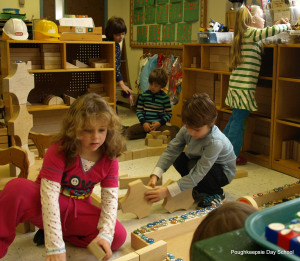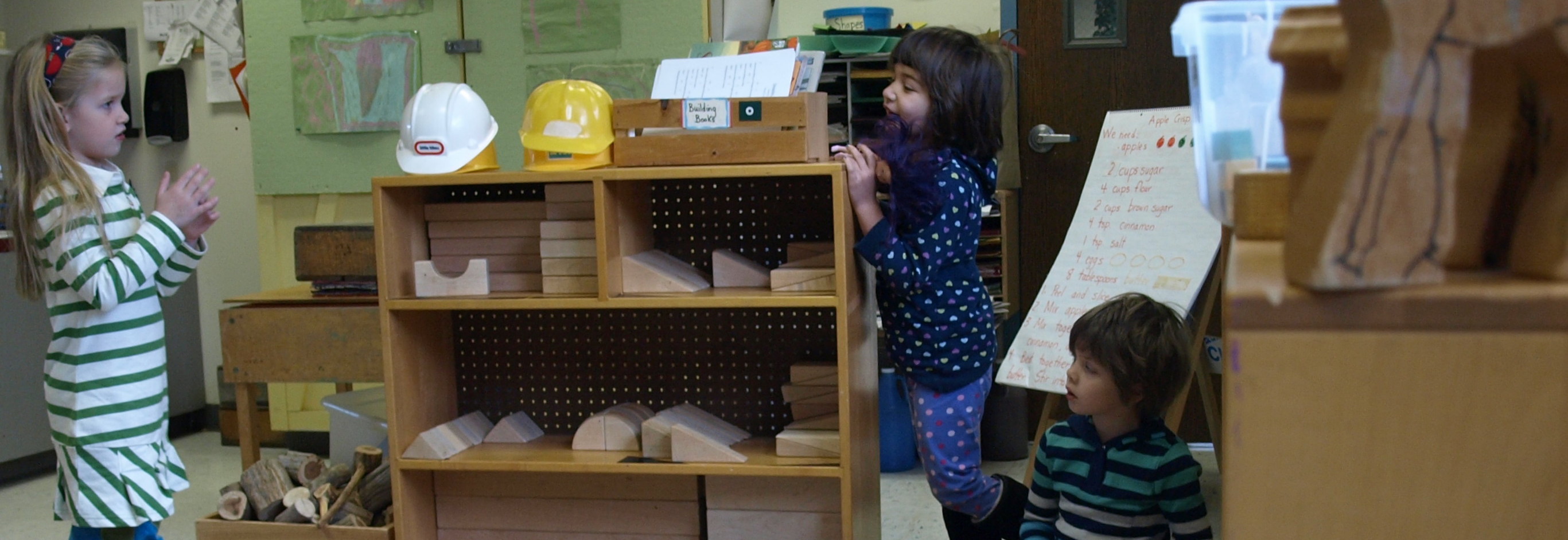 So the debate on the purpose of play in early childhood simmers on. It popped up on my Facebook page yesterday with this from the ASCD: Play is problem solving
So the debate on the purpose of play in early childhood simmers on. It popped up on my Facebook page yesterday with this from the ASCD: Play is problem solving
That then led me to the The Playtime’s the Thing from the Washington Post.
The pressure is on to raise achievement scores and this puts the squeeze on time for play.
“If we are to prevent the achievement gap and develop a cradle-to-career educational pipeline, early learning programs are going to have to be better integrated with the K-12 system,” Education Secretary Arne Duncan said Wednesday at a convention of the nation’s largest early childhood organization, the National Association for the Education of Young Children.
With school districts targeting student achievement the focus has been on literacy – especially reading and math skills for children at ever-younger ages. No Child Left Behind requires schools to ensure that all children are proficient in math, reading and writing by 2014. What could be wrong with that? Well – quite a lot as it happens. With a society that actually needs a wide range of aptitudes and abilities – with the route to actual success in school being more than the narrow gateway of test scores – we are in danger of leaving many children behind.
Furthermore – it appears that while certain measures of proficiency show up in test results the far reaching effects of lack of play do not. According to the article lost playtime shows up in life. And with devastating, costly consequences – delinquency, school failure, emotional disturbance and delayed social development.
It’s with dismay, then, that I read the statistic of the amount of play allowed quote story:
“… in kindergarten, children are playing for fewer than 30 minutes a day, according to a study of full-day kindergartens in New York City and Los Angeles published in the spring by the Alliance for Childhood, a nonprofit group based in College Park. They spend four to six times more time on literacy, math and test-taking than they do on play.
What it signals to me is a false dichotomy of play and work. Perhaps adults can distinguish between the two – although meaningful work often has a playful aspect. But for small children the two are one and the same.
If play is the work of the child then why are we keeping these children from their essential work for a short-term bump in test scores? And at what price? Evidence seems to suggest that this educational dead end short circuits the very activity – the industry and intellectual activity of active play – that children need to grow academically and socially.
I’m with Friedrich Froebel on this one:
Play is the highest level of child development…It gives…joy, freedom, contentment, inner and outer rest, peace with the world…The plays of childhood are the germinal leaves of all later life.



What a wonderful quote by Froebel. I would love the reference for this. I will have to remember this later on in my writing. I constantly shake my head, wondering why it is we are still arguing the importance of play for learning in childhood.
http://wowkits.wordpress.com/